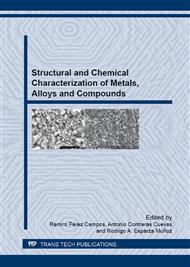p.9
p.15
p.21
p.29
p.39
p.47
p.53
p.61
p.69
Analysis of Weld Bead Parameters of Overlay Deposited on D2 Steel Components by Plasma Transferred Arc (PTA) Process
Abstract:
Plasma Transferred Arc (PTA) process is increasingly used in applications where enhancement of wear, corrosion and heat resistance of metals surface is required. The shape of weld bead geometry affected by the PTA welding process parameters is an indication of the quality of the weld. PTA is a versatile method of depositing high-quality metallurgically fused deposits on relatively low cost surfaces. The overlay deposited is an alloy that is hard and more corrosion resistant than counterparts laid down by Gas Tungsten Arc Welding (GTAW) or Oxy Fuel Welding (OFW) processes. Weld deposits are characterized by very low levels of inclusions, oxides, and discontinuities. This process produces smooth deposits that significantly reduce the amount of post weld machining required. Metal-Mechanic industry continuously requires recovering tool steel components subjected to severe wear. The steel known as D2 is considered to be a high carbon, high chromium cold work tool steel. In this research, weld beads were deposited on D2 steel by using PTA process with different parameters as welding current and travel speed using base nickel filler metal. In order to evaluate the metallurgical features on the weld beads/substrate interface a microstructural characterization was performed by using Scanning Electron Microscopy (SEM) and to evaluate the mechanical properties was conducted the wear test.
Info:
Periodical:
Pages:
39-45
Citation:
Online since:
April 2013
Keywords:
Price:
Сopyright:
© 2013 Trans Tech Publications Ltd. All Rights Reserved
Share:
Citation:


